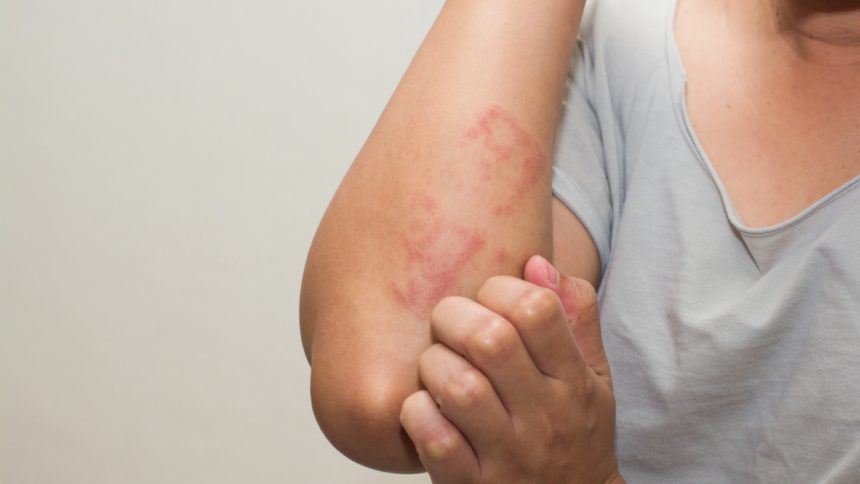Understanding Scabies and Its Symptoms
Scabies is a highly contagious skin condition caused by the parasitic mite Sarcoptes scabiei. These mites burrow into the skin, causing severe itching and irritation. Although scabies can affect individuals of all ages and backgrounds, it spreads rapidly in crowded environments, making it a significant public health concern in locations such as schools, nursing homes, and shared living spaces. Common symptoms of scabies include:
- Persistent itching, especially at night.
- A rash consisting of small red bumps or blisters.
- Thin, thread-like lines on the skin, which indicate mite burrows.
- Thick, crusty patches in severe cases (crusted scabies).
The symptoms often appear in warm areas of the body, such as between fingers, under the breasts, around the waist, and in the groin area.
The Causes and Spread of Scabies
Scabies is mainly transmitted through prolonged skin-to-skin contact with an infected individual. In some cases, it can also spread indirectly through contact with contaminated items, such as bedding, clothing, or towels.
Key risk factors include:
- Living in close quarters with others.
- Sharing personal items like clothing or bedding.
- Direct physical contact with an infected individual.
Understanding these factors is crucial for breaking the chain of transmission and effectively managing outbreaks.
Why Early Treatment Is Essential
Scabies does not resolve on its own. If left untreated, it can lead to:
- Intense discomfort and disrupted sleep due to itching.
- Secondary bacterial infections caused by excessive scratching.
- The spread of mites to family members, housemates, or others in close contact.
Early treatment not only alleviates symptoms but also helps prevent further complications and stops the infestation from spreading to others.
Effective Medications for Treating Scabies
Permethrin Cream: The Gold Standard
Permethrin cream is the most widely recommended treatment for scabies. This topical medication kills both the mites and their eggs, offering a comprehensive solution to the infestation.
How to Use Permethrin Cream:
- Apply the cream to clean, dry skin, covering your entire body from the neck down.
- Pay special attention to areas where mites are likely to burrow, such as between fingers, under nails, and around the waist.
- Leave the cream on for 8 to 14 hours before washing it off thoroughly.
- Repeat the application after seven days to ensure complete eradication of mites and eggs.
Permethrin cream is safe for most individuals, including children over two months old. For reliable and convenient access, you can purchase permethrin scabies cream at PostMyMeds, ensuring quick treatment and peace of mind.
Ivermectin: A Trusted Oral Treatment
For severe or widespread infestations, or for those unable to use topical treatments, ivermectin is an effective oral medication.
When Ivermectin Is Recommended:
- For cases of crusted scabies, where the infestation is extensive.
- When topical treatments have failed or are unsuitable.
- For outbreaks in institutional settings, where rapid treatment is needed for multiple individuals.
Ivermectin is taken as a single dose, and a second dose may be prescribed after seven to 14 days to ensure complete elimination of mites.
Home Remedies and Symptom Relief
While medical treatments are essential for eradicating scabies, home remedies can help alleviate symptoms during recovery:
Relieving Itching
- Apply calamine lotion to soothe irritated skin.
- Take cool baths or use wet compresses to reduce itching.
- Use antihistamines to manage nighttime itching and improve sleep.
Preventing Secondary Infections
- Keep nails trimmed short to minimise skin damage from scratching.
- Clean affected areas gently with mild soap and water.
These remedies can provide comfort while the prescribed medications work to eliminate the mites.
Preventing Reinfestation and Protecting Your Household
Reinfestation is a common concern with scabies, as mites can survive on fabrics and surfaces for up to 48 hours. Follow these steps to prevent the cycle of infestation:
- Treat All Close Contacts: Household members and sexual partners should be treated simultaneously, even if they show no symptoms.
- Wash Fabrics Thoroughly: Wash all clothing, bedding, and towels in hot water and dry them on high heat. Items that cannot be washed can be sealed in plastic bags for at least 72 hours.
- Vacuum Regularly: Clean carpets, upholstery, and other soft surfaces to remove mites and their eggs.
- Avoid Sharing Personal Items: Ensure everyone in the household uses their own towels, clothing, and bedding during the treatment period.
These measures are critical for breaking the chain of transmission and ensuring a successful outcome.
When to Seek Professional Advice
While most cases of scabies can be treated effectively with prescribed medications, you should seek medical attention if:
- Symptoms persist or worsen after completing treatment.
- Signs of a secondary bacterial infection develop, such as increased redness, swelling, or pus.
- You suspect you have crusted scabies, which requires more intensive treatment.
A healthcare professional can provide tailored advice and adjust your treatment plan if necessary.
Taking Control of Scabies
Scabies may be a challenging condition, but with the right approach, it can be treated effectively and safely. By combining proven medications like permethrin cream and ivermectin with supportive care and preventative measures, you can quickly eliminate the infestation and protect yourself and your loved ones.
Acting promptly and following through with treatment not only restores comfort and confidence but also ensures a mite-free environment for everyone involved. With the right steps, scabies can be a thing of the past, leaving you free to focus on the things that matter most.
Lynn Martelli is an editor at Readability. She received her MFA in Creative Writing from Antioch University and has worked as an editor for over 10 years. Lynn has edited a wide variety of books, including fiction, non-fiction, memoirs, and more. In her free time, Lynn enjoys reading, writing, and spending time with her family and friends.















